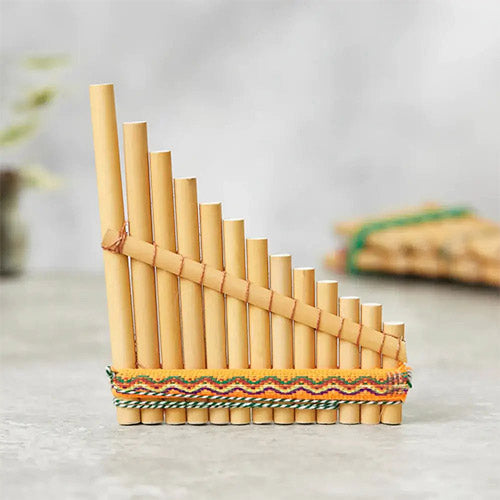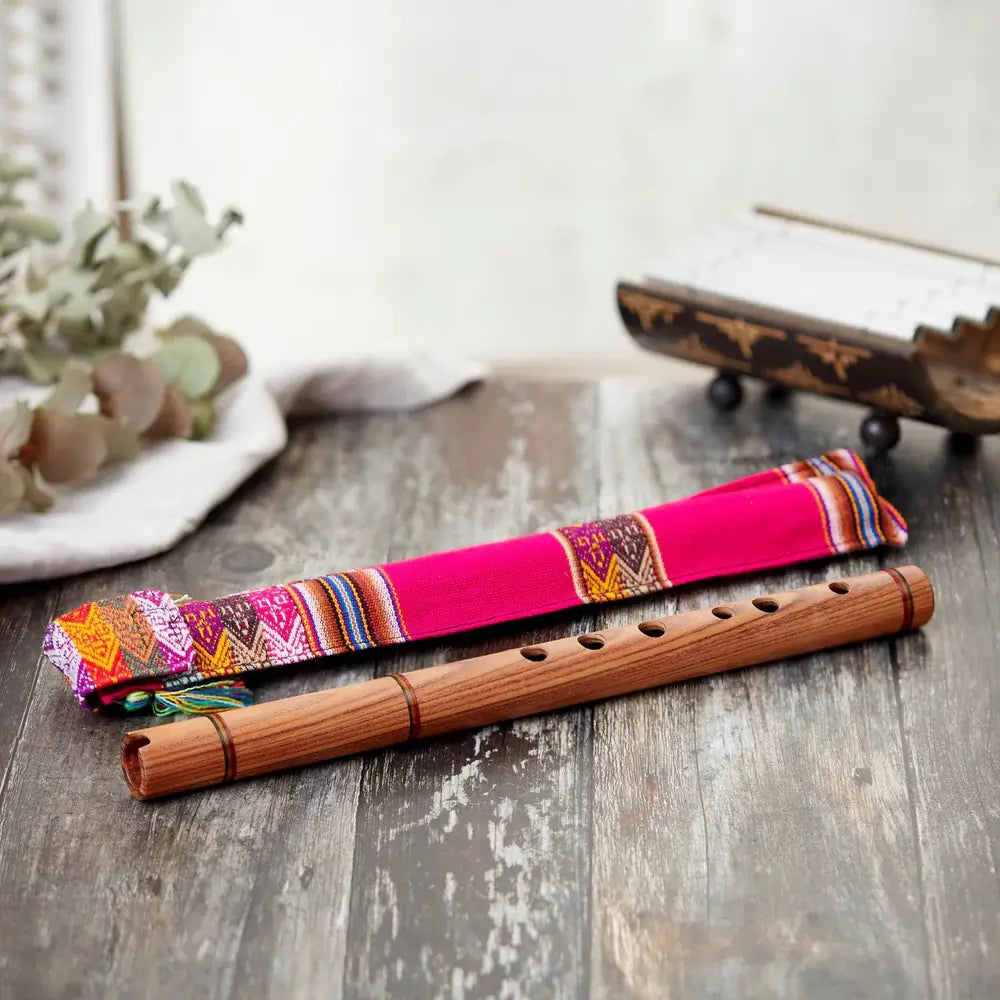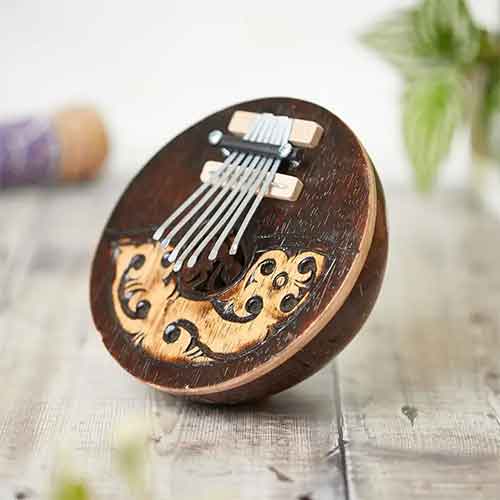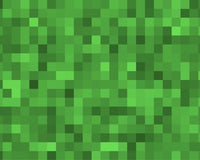The Kashaka Cas Cas shaker may seem simple, but it can be challenging to play correctly. The percussion instrument is used in various musical genres and has unique qualities that make it extremely versatile.
About the Kashaka
The Kashaka, sometimes known as Cas Cas, is more than just a rhythmic instrument. It originated in West Africa, the Kashaka consists of two small gourds filled with seeds or beads and connected by a string. When played, they create a distinctive sound as rhythmic as melodic.
The technique to play the Kashaka involves a combination of shaking, swinging, and snapping the gourds together, which can produce a variety of complex rhythms. Mastering the Kashaka requires dexterity, timing, and a sense of groove. It is often used to accompany other instruments in group settings or as a solo instrument for rhythmic accompaniment.
The history of the Kashaka is deeply rooted in African culture, where it has been used for centuries in ceremonial music and communal gatherings. As you hold a Kashaka in your hands, you are not just holding a musical device but a piece of history that has been passed down through generations.
Material
The Kashaka is traditionally made from dried gourds, which provide a natural and organic sound that is hard to replicate with synthetic materials. However, as the instrument has gained popularity, various materials have been used to craft modern versions of the Kashaka. Each material brings its unique timbre and feel to the instrument, offering a wide range of experiences.
We sell wooden varieties made from two pieces of wood, which produce a warm and rich sound. The wood is carefully selected for its acoustic properties and durability. These wooden Kashakas are often favored for their traditional appearance and the depth of sound they provide.
Then there are those made from natural gourds, which are the most authentic type of Kashaka. They are lightweight and have a sharp and clear resonant quality. The gourds are hollowed out, dried, and filled with seeds or beads to create the characteristic shaking sound.
Where are kashaka Shakers made?
Kashaka may have roots in Africa, but its influence has spread far and wide, leading to production worldwide. Artisans from each region make the instrument in a different way using local materials and different techniques.
African / South American Kashaka
Mainly found in West Africa, local artisans handcraft the Kashakas using traditional methods passed down through generations. These Kashakas are often made from natural gourds and are integral to the cultural music of the region. Africa, Peru and other South American countries have all adopted the Kashaka, incorporating it into their folk and contemporary music. The South American variations often feature vibrant colours and intricate designs, showcasing the lively spirit of their music culture.
You can get the South American Kashaka here.
Indonesian Ocean Kashaka - Indonesia

These kashaka shakers have a very interesting design that resembles the ocean or the earth globe. They are crafted in Indonesia and have a shiny satin finish. They have a long rope which is useful because it can easily be adjusted to fit the player. You can purchase the Indonesian kashaka here.
Japanese Kengoma Kashaka - Japan

Even a unique variation from Japan made from Hemp has found its place in the Kashaka world. Japanese Kashakas are crafted, reflecting the precision and care characteristic of Japanese artisanship. The hemp material provides a distinct, subtle, powerful, organic sound. You can get the Japanese kashaka here.
The Kashaka in different musical genres
The Kashaka's versatility is evident in its widespread use across various musical genres. From traditional African music to contemporary pop, it has found its rhythm in the hands of musicians worldwide.
In Africa, the Kashaka is a staple in traditional music, used in ceremonies, storytelling, and dance. Its ability to produce complex rhythms makes it ideal for the polyrhythmic music styles of the continent. African musicians have long celebrated Kashaka for its ability to mimic the nuances of language and communicate beyond words.
The Kashaka has also found its way into Latin music, where it complements congas, bongos, and other percussion instruments. Its sharp, staccato sounds cut through the mix, adding a distinctive texture to the rhythm section. Even in pop music, the Kashaka has found a place. Its unique sound can be heard in recordings and live performances, providing a percussive element that is unusual. The instrument's adaptability to various musical settings demonstrates its appeal and the creativity of artists who incorporate it into their work.
Where to buy the Kashaka?
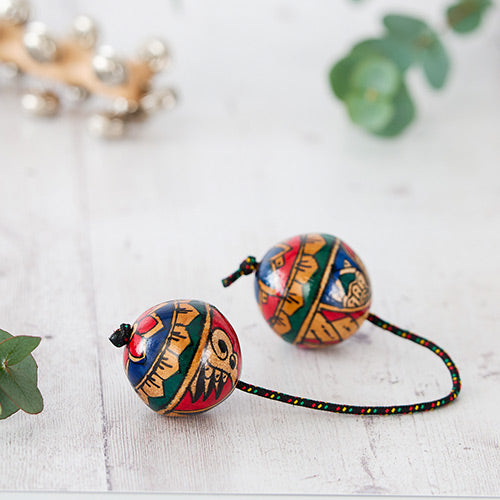
These handheld percussion instruments provide a unique and versatile sound, suitable for various musical genres and styles. Their compact size and lightweight design make them highly portable, allowing musicians to easily incorporate them into performances or jam sessions.
Kashaka shakers are also relatively easy to learn and play, making them accessible to beginners while offering creative possibilities for experienced musicians. With their distinct sound and rhythmic potential, Kashaka shakers add texture and dynamics to music productions, enhancing musical arrangements and performances alike. They also promote rhythmic coordination and hand-eye coordination, making them not only musical tools but also valuable for skill development. Check out our Kashaka shakers here.
Kashaka Cas Cas Shaker (Frequently Asked Questions)
How do you pronounce "Kashaka" and "Cas Cas"?
Kashaka is typically pronounced as "ka-sha-ka," while "Cas Cas" is pronounced as "kas-kas."
What are Kashaka Shakers made of?
Traditional Kashaka Shakers are made from a variety of materials, including gourds, wood, or metal. The outer shells are often crafted from dried gourds or carved wood, while the fillings consist of seeds, beads, shells, or other small objects that produce rhythmic sounds when shaken.
How are Kashaka Shakers played?
To play Kashaka Shakers, the player holds one in each hand and manipulates the string connecting them. By swinging and twisting the hands in various directions, the gourd-shaped objects collide, producing rhythmic patterns and percussive sounds. Different techniques, such as tossing, rolling, or flicking, can be employed to create a wide range of rhythms and effects.
Can anyone learn to play Kashaka Shakers?
Yes, Kashaka Shakers are accessible to beginners and experienced percussionists alike. Learning to play involves practicing basic techniques such as hand coordination, rhythm control, and manipulation of the shakers. With dedication and practice, individuals can develop proficiency and explore creative possibilities with the instrument.
How do you care for and maintain Kashaka Shakers?
Proper care and maintenance are essential to preserve the integrity and sound quality of Kashaka Shakers. This includes storing them in a dry, cool environment away from direct sunlight or moisture, periodically cleaning the outer shells with a damp cloth, and ensuring that the string connecting the shakers is secure and free from damage. Avoid rough handling or dropping the shakers can help prevent cracks or breakages.



